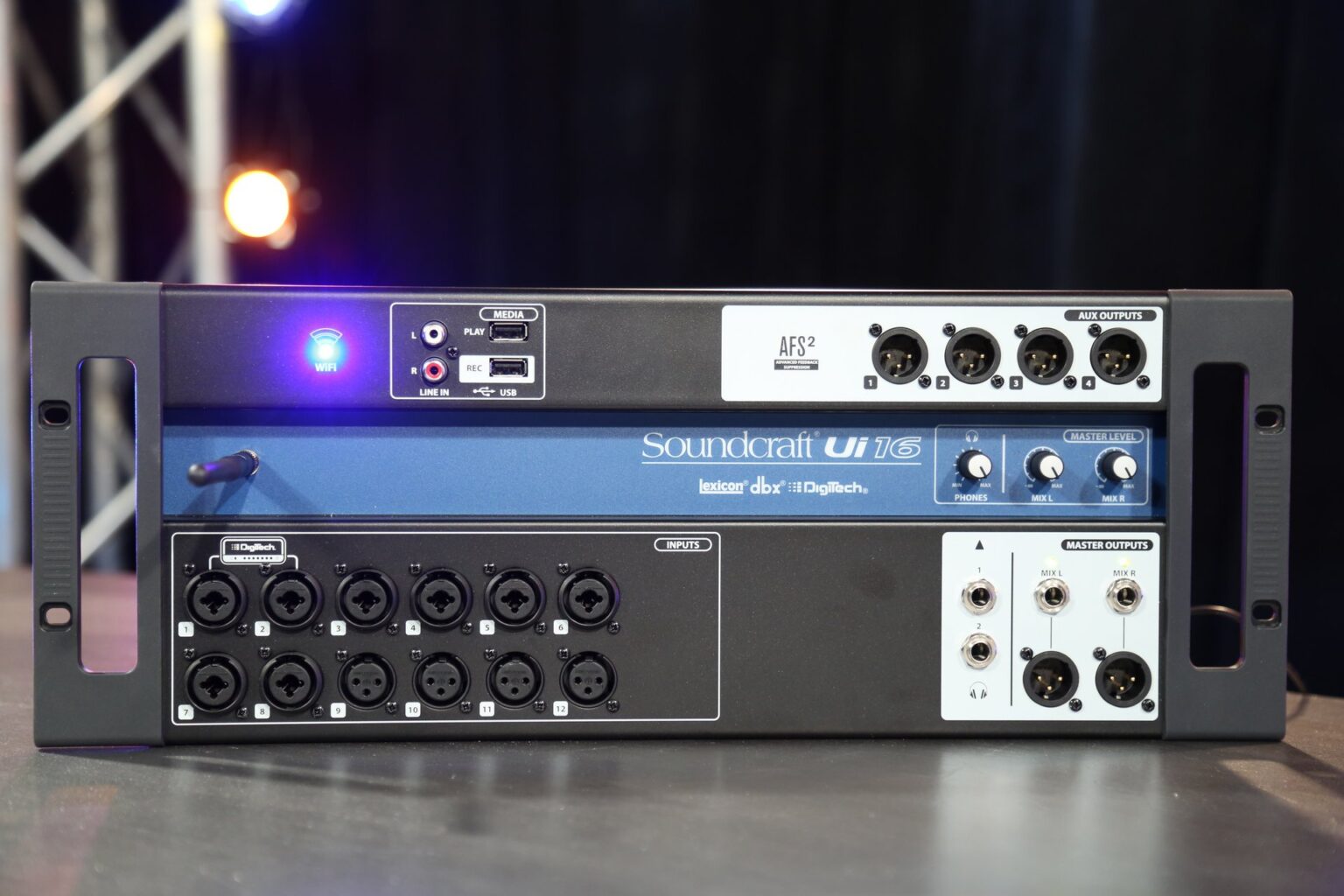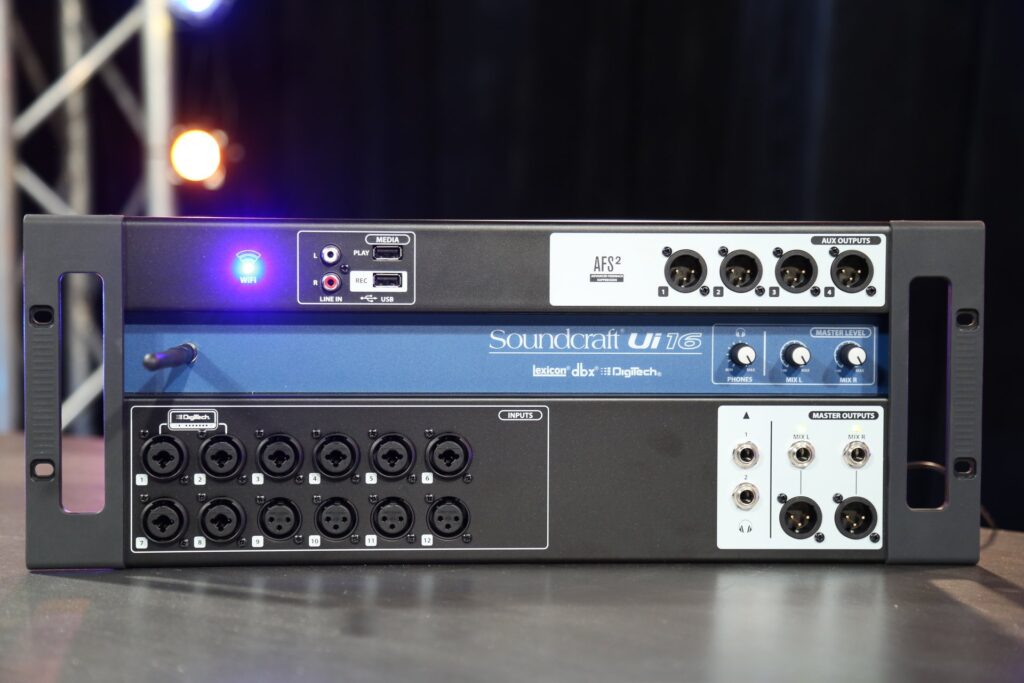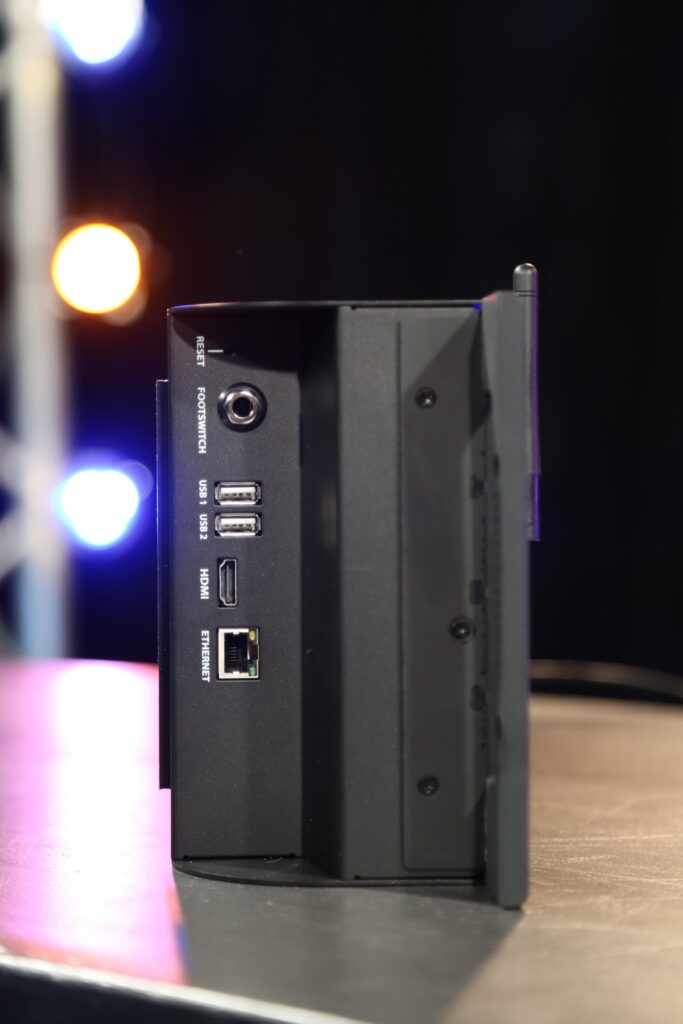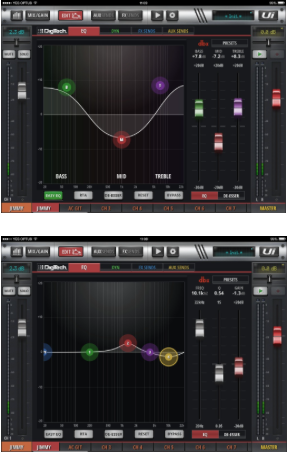News
11 Aug 2015
Review : Soundcraft Ui16

Subscribe to CX E-News
What’s in a name?
The odd thing about the Ui is that while Soundcraft is an English company, the Ui was actually conceived in Melbourne, Australia by SM Pro Audio. The firm was acquired by Soundcraft earlier this year, and now the Ui12 and Ui16 have landed on shelves. The Ui series has a feature set which make it a good choice for small musical acts (duos, trios and such). While it sits in a realistic price bracket to garner strong appeal in this market, it would work equally well in corporate AV.
Ui12 and Ui16 both look largely the same, the key difference being the number of connectors on the box. I call it a box, because even though I know it’s a mixer it bears a much closer resemblance to a stage box than a console. Like the thing everybody’s doing now, Soundcraft has released a mixer with no faders, but it’s a bit different from many others out there.
For starters, WiFi is built into the box. You can plug in power and audio, then connect wirelessly to the unit and start using it immediately. Unlike other systems, the Ui interface will run on virtually any device with a browser, so your control choices are limited only to whatever you can lay your hands on. There are no app updates to download nor any other annoying incompatibility problems. As much as the interface works well, frankly the idea of relying solely on any 2.4GHz device working reliably for the duration of a gig scares the pants off me. Perhaps anticipating such WiFi reluctance as mine, the designers were smart enough to include an RJ45 Ethernet connection, so you can run a cable direct from the Ui into a laptop and leave another instance of the interface running there. If the WiFi fails, just walk to the laptop, continue mixing, and keep your pants on. If for some reason you prefer to use your own WiFi gear, you can disable the on-board Ui WiFi and do this.
The user interface itself is pretty intuitive. The common stuff like faders are the first thing you see when you launch it, and the process for getting into details like channel EQ is obvious. Even though there aren’t a lot of channels involved, Soundcraft has managed to include a couple of ways to get to certain features (such as aux sends), which speeds up operation a bit. If you save the “address” of the interface as a favourite on your iPad home screen, the interface operates in full screen next time you run it.
Multiple users can connect simultaneously to the Ui via WiFI, with definable access levels for which auxiliaries each user can access. Specifying which aux output and channels relate to the user (the “me” channels) enable a “more me / more band” slider – this pushes the user’s channels up and the band channels down simultaneously, and vice versa. It sounds a bit goofy to professional users, but enthusiastic amateurs will find it helpful. Similarly the ‘simple EQ mode’, which reduces the four-band parametric on each channel to a three- band fixed frequency and bandwidth EQ.
It’s worth noting the responsiveness of the interface is excellent. With several users operating faders simultaneously everything tracks as it should and with no discernable lag. Soundcraft has done really well with this.
The USB port can be used to playback and record audio, and because the stereo input can be split and turned into dual mono you could conceivably run a show with samples or tracks on one channel and click on the other. Remote control over the USB transport is available via the app too, so it would actually be a pretty cool way to run the show. I dumped a bunch of different file types onto a USB stick and the Ui played them all without baulking.
Four internal Lexicon effect engines provide reverb, delay, chorus and room effects to which any of the channels can be routed. Additionally to this, the first two channels also include DigiTech amp simulation with a range of presets. The effects all sound believable, and overall the console, such as it is, sounds good too. I was about to pack the Ui in a case and take it to Melbourne, when I realised there was a problem. My input list required 15 channels.
Soundcraft has followed the trend of naming the Ui models based on the number of retail channels each one has, not the number of preamps. The Ui16 has 12 preamps – the other four channels are a pair of stereo RCA inputs (which you can split and make two monos), as well as the USB playback channels. A console from a different manufacturer named “1604” which had only 4 pre-amps springs to mind as a far worse offender. Reality is that Soundcraft is only doing what they need to in order to remain competitive in a market where most brands sell ‘retail channels’.
I really like this Ui, even if it doesn’t have enough channels for my specific application. It works really well, it sounds good and it seems really reliable. It’s extremely compact, and in my mind the fact you can establish a cabled connection for the control mechanism puts it way ahead of many other similar products.
- Brand: Soundcraft
- Model: Ui16
- RRP: AUD$999.00 inc GST
- Product Info: www.soundcraft.com
- Distributor: www.jands.com.au
Subscribe
Published monthly since 1991, our famous AV industry magazine is free for download or pay for print. Subscribers also receive CX News, our free weekly email with the latest industry news and jobs.













